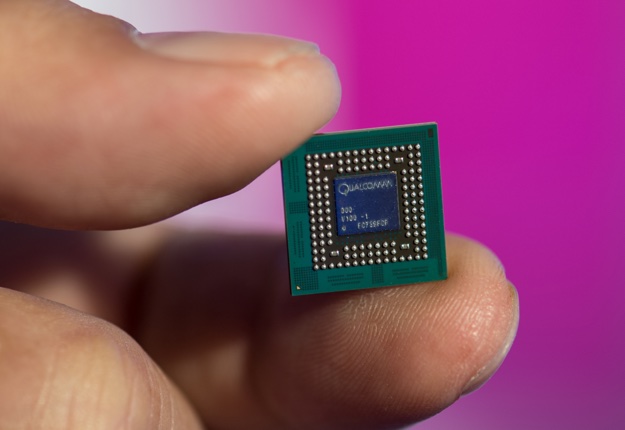Qualcomm Announces Global 5G Design Wins For Snapdragon X50 5G Modem With Trials This Year

The list of partners is vast and includes a number of familiar names like ASUS, Fujitsu, Nokia, HTC, Inseego/Novatel Wireless, LG, Netcomm Wireless, Netgear, OPPO, Sony, Xiaomi and ZTE (among others). We don't see Apple anywhere on that list, of course, as you might expect, but we'll save that discussion for another day…

The increased bandwidth of 5G will make the Snapdragon X50 5G NR family suitable for a number of applications including smartphones, always-connected PCs (like Windows 10 on Qualcomm Snapdragon 835 Mobile PC Platform), wireless head-mounted display (HMDs), and mobile broadband that delivers fiber-class speed. Other key areas of opportunity include industrial real-time communications, safety communications networks, and wireless connectivity for Level 5 autonomous driving -- all of these usage cases would be optimized with 5G's ultra-reliable, ultra-low latency (think 1 to 2ms) communication technologies. In fact, its low latency and capacity advantages will create new business models for many companies and in varied industries.
The first devices out of the gate should be able to support speeds up to 2Gbps (depending on carrier throughput of course). However, once the technology matures and carriers are able to support the increased speeds, we will later see products supporting full 5Gbps data rates and throughput. But 5G is not just about speed and Quality of Service (QoS) optimizations, it's also about capacity. MU-MIMO concepts are part of the 5G standard, which help to better support a large number of users. In addition, as people and businesses move to 5G solutions, it will obviously reduce the strain on existing 4G LTE wireless networks.
“The state of the art 5G technology brings not only an ultra-fast, responsive communication experience, but also a vastly enriched entertainment experience with content to our Xperia product range," said Izumi Kawanishi, Director, EVP, Product Business Group, Sony Mobile Communications Inc. "We aim to deliver these new experiences to our customers in the coming years."
“With the new network architecture, 5G will provide at least ten-times peak data rate of 4G networks, with milliseconds of latency and hundreds of billions of device connectivity capability,” added Lixin Cheng, CEO, ZTE Mobile Devices. “It will certainly start a new era of smart connectivity and ZTE has a deep understanding of the end-to-end 5G system."
Before products with 5G wireless radios can start making their way to customers, mobile operators are going to first have to start qualifying the hardware for deployment on their networks. To that end, Qualcomm also announced that global operators will begin using the Snapdragon X50 5G modem for trials starting this year. Trials will be conducted using both the sub-6 GHz and millimeter wave (mmWave) 28GHz spectrum bands, and will involve using Qualcomm's 5G mobile test platform and smartphone reference design.

Global operators lined up for the 2018 trials include AT&T, British Telecom, China Telecom, China Mobile, China Unicom, Deutsche Telekom, KDDI, KT Corporation, LG Uplus, NTT DOCOMO, Orange, Singtel, SK Telecom, Sprint, Telstra, TIM, Verizon and Vodafone Group.
It should be interesting to see how business models will change given how much data we'll be able to consume at much lower latencies with 5G wireless solutions. Just imagine the amount of data consumed by wireless 4K UHD broadcasts, and the effects on the increasingly controversial net neutrality policies and business models for carriers who will no doubt want to maximize their ROI for 5G capabilities and the new types of services it will enable. Legislation and policies will obviously have to evolve as well, to meet the new capabilities of the modern 5G network.





